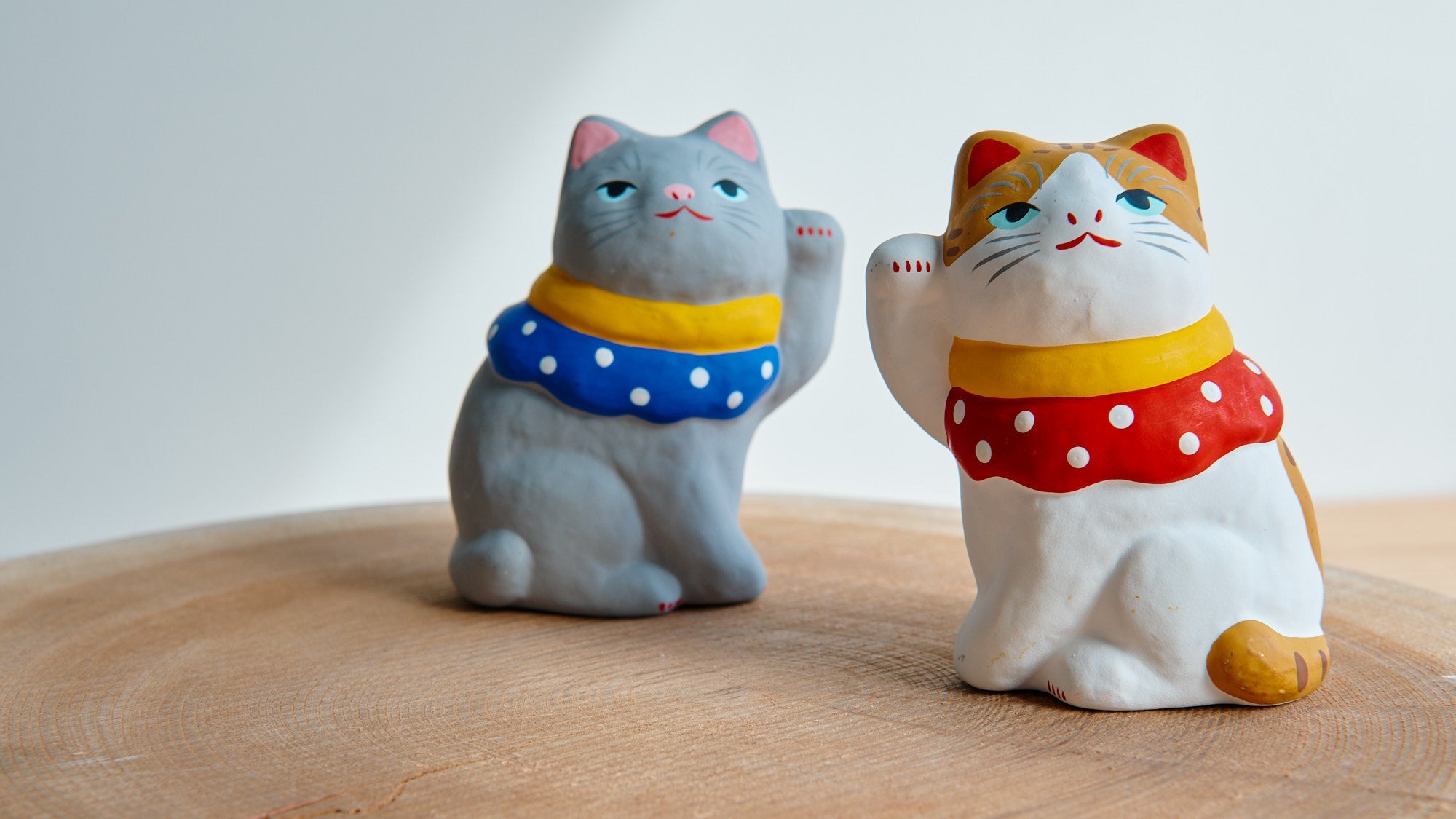











Pink Mori Oinori Neko Lucky Cat 4.5 in
Estimated Shipping Widget will be displayed here!
This adorable pink lucky cat, or maneki neko, is painted using the mori-e technique, similar to slip trailing. A thick paint is squeezed out of an icchin, a dispenser with a fine tip, and the patterns are carefully painted onto the surface. Mori-e adds a decorative pattern and tactile texture to a smooth porcelain surface.
The intricately designed lines and dots can be felt when held in one's hand.
This lucky cat, with both paws lifted to its face, mirrors the pose of a cat praying, referred to as oinori in Japanese, or asking for attention that is endearing. Real cats occasionally adopt similar postures when seeking their owners' attention, adding a delightful touch of authenticity.
Filled with Japanese tradition and good fortune, this Japanese figurine is excellent for your house decor and brings good luck to you and your loved ones.
DETAILS
| Quantity | 1 |
| Size | 7 cm (2.8 in) x 7 cm (2.8 in) x H 11.5 cm (4.5 in) |
| Material | Porcelain |
Maker / Brand
Chosaku Nishi, the founder of Choho Kiln studied the method of Mori-e with his brother Taikichi back in the Taisho period. Up till that time, this method was used to decorate flat surfaces. The brothers developed the idea of applying this method to Kutani Ware figurines as Chosaku had studied the basics of form, design and color mixing as a teenager. As it turned out, the Mori-e technique suited Kutani Ware figurines very well, and henceforth Mori-e became the mainstream decorating technique for Kutani Ware figurines.
The second generation Choho learned various techniques from his predecessor, trained many apprentices, and solidified the foundation of Choho Kiln. Today, Choho is the third generation of the Choho family, and is committed to preserving the tradition of Mori-e while seeking out new possibilities for this traditional technique.

Crafts
Kutani ware is a pottery produced in the Kaga region of Ishikawa Prefecture, with a history spanning over 350 years. It is characterized by the heavy brilliance of the five colors of navy blue, red, purple, green, and yellow that are applied to the bold and daring lines. Its long history has evolved through the tireless efforts and enthusiasm of people who have sought innovation while maintaining tradition.

Choose options












Estimated Shipping Widget will be displayed here!
Maneki Neko
Often referred to in English as lucky cats, maneki neko are iconic figurines in Japanese culture. Modeled after several folktales, they are said to beckon luck and, when placed at a storefront, potential customers. View the collection below to find a favorite maneki neko of your own to match your style and uplift your home or business.


